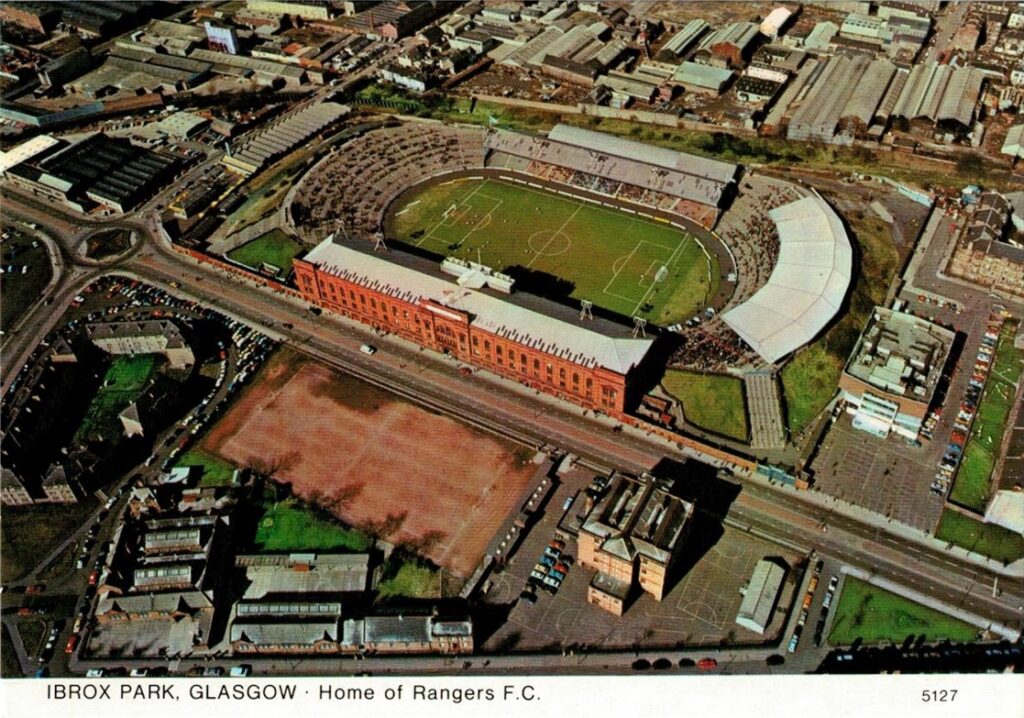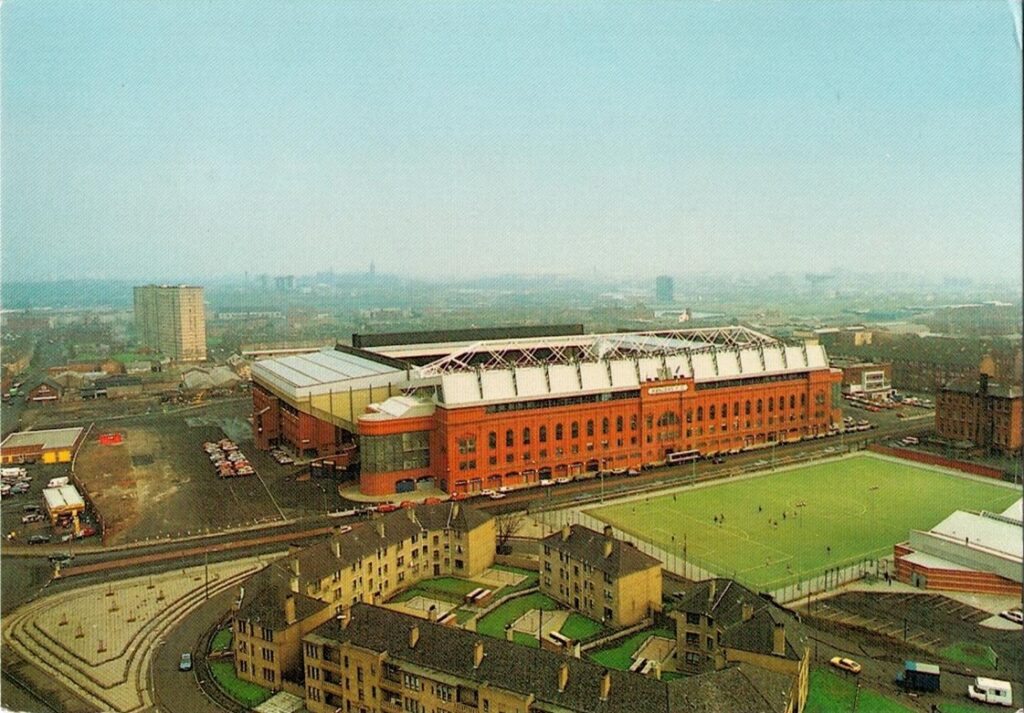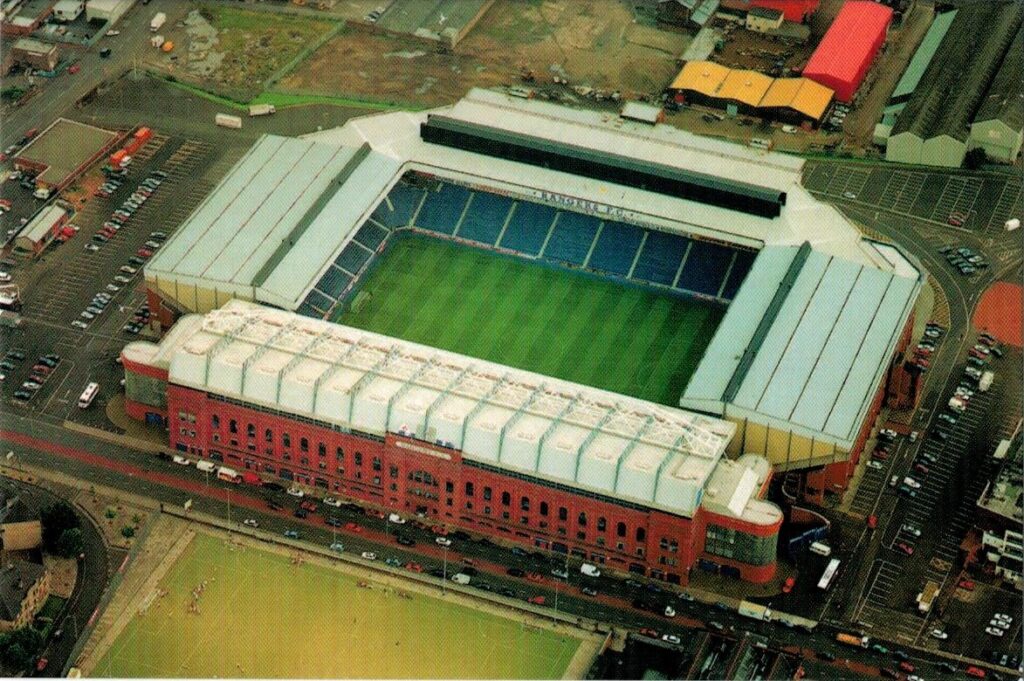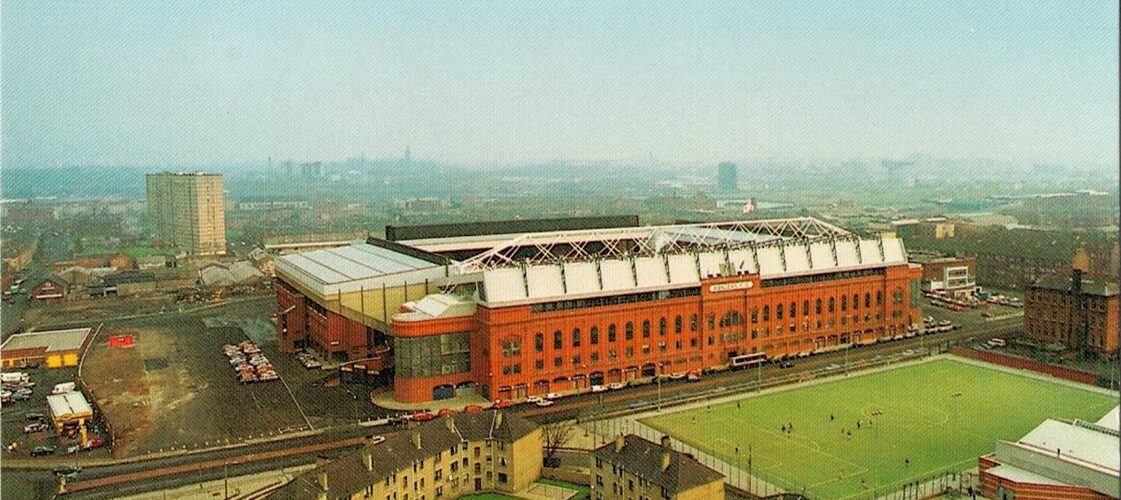Ibrox Stadium, zwany niegdyś Ibrox Park, to stadion Rangersów w szkockim Glasgow. Inauguracja stadionu mogąca pomieścić 40 000 kibiców miała miejsce w 1899 roku. W trzy lata później pojemność obiektu zwiększono do 75 000 widzów. W 1902 roku podczas meczu reprezentacji Szkocji i Anglii doszło do zawalenia się jednej z trybun i śmierci 25 osób. Po tej tragedii usunięto wszystkie elementy drewniane, które uległy uszkodzeniu podczas ulewnych deszczów.
Pod koniec lat 1920-tych rozpoczęły się prace nad budową nowej Trybuny Głównej autorstwa Archibalda Leitcha. Jej otwarcie nastąpiło 1 stycznia 1929 r. i posiadała ona wówczas 10 tysięcy miejsc siedzących, a także umiejscowione najbliżej murawy sektory stojące. Ceglana fasada Main Stand zachowała się do dzisiaj, a sama trybuna została umieszczona w 1987 roku na liście brytyjskich zabytków. Dalsza rozbudowa stadiony sprawiła, że w 1939 roku na meczu derbowym z Celtic odnotowano 118 567 widzów, co pozostaje rekordem frekwencji na wyspach.
W latach 1961-1971 doszło do kolejnych czterech wypadków, z kolejnymi ofiarami śmiertelnymi. Kolejne modernizacje stadionu i montaż 50 987 krzesełek wpłynęły na spełnienie wszelkich wymogów bezpieczeństwa. Zgodnie z wytycznymi UEFA na Ibrox mogą być rozgrywane najważniejsze mecze klubowe i międzynarodowe. Na stadionie Rangersów rozgrywane są mecze reprezentacji Szkocji i mecze o puchar tej części Wielkiej Brytanii.

(1) Circa 1980. Wyd. Whiteholme of Dundee. Wymiary: 10,5*14,9 cm. Nr: 5127.

(2) Circa 1980. Wyd. Whiteholme (Publishers) Ltd Dundee. Wymiary: 10,5*15,0 cm. Nr: 5127 X.

(3) Circa 2000. Wyd. nieznane. Wymiary: 10,4*14,8 cm. Nr: GB-013.

(4) Circa 2000. Wyd. Premier Image Products. Wymiary: 10,0*14,9 cm. Nr: brak.
